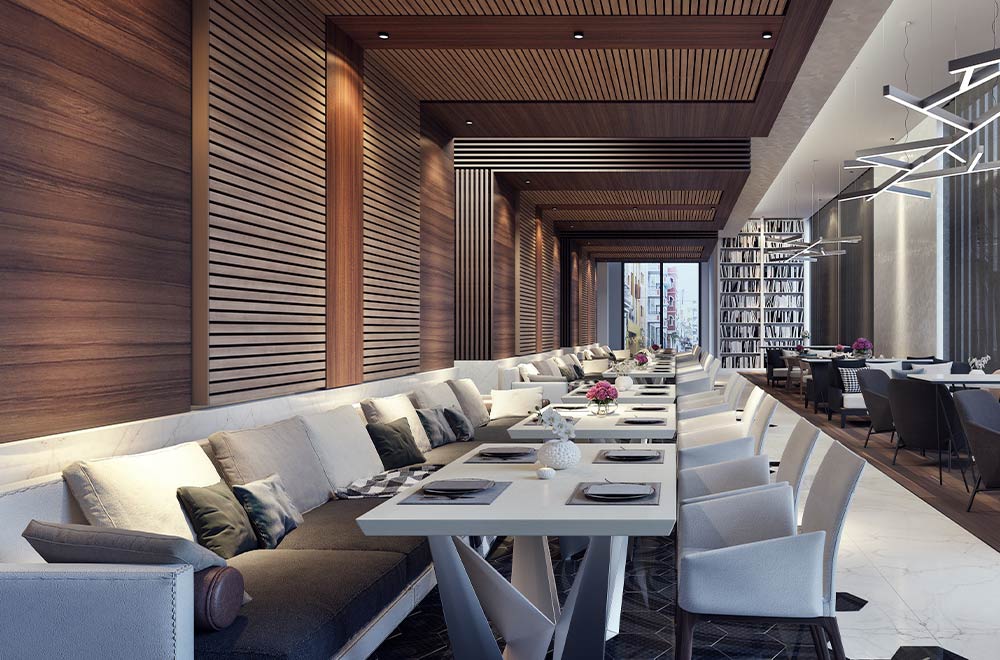Fine Dining Experience Islamabad: Delight In Extravagant Culinary Pleasures
Savor Genuine Oriental Food With a Pan-Asian Spin for a Culinary Experience
Getting started on a cooking trip via authentic Oriental cuisine, enhanced with a Pan-Asian spin, uses a special possibility to check out the rich tapestry of tastes that specify the area's varied culinary customs. This experience invites you to relish the exquisite balance of tastes-- sweet, salty, spicy, and sour-- harmonized by fragrant natural herbs and seasonings. Picture the ingenious fusion of Thai curry and ramen or the unexpected delight of sushi burritos. As you ponder these luring meals, think about the cultural stories and historic influences that form them, each bite offering a story waiting to be uncovered.

Checking Out Pan-Asian Flavors
In the world of international gastronomy, Pan-Asian cuisine stands out for its remarkable diversity and the harmonious interaction of tastes from various Oriental cultures. This culinary strategy commemorates the abundant practices and special active ingredients discovered throughout the continent, creating a tapestry of preferences that is both gratifying and intriguing. Key to Pan-Asian cuisine is its capacity to balance different flavors-- sweet, salted, spicy, and sour-- while highlighting the quality and quality of each active ingredient.
From the umami-rich soy sauce of Japan to the intense chili peppers of Thailand, Pan-Asian cuisine offers a comprehensive palette of flavors. These components are commonly integrated in innovative means, boosting recipes with layers of intricacy. As an example, the usage of great smelling herbs such as lemongrass and cilantro, common in Vietnamese and Thai food, includes a refreshing brightness to recipes, while the unification of coconut milk delivers a creamy, abundant texture.
The emphasis on fresh fruit and vegetables and aromatic flavors ensures that each meal is not just a feast for the taste but likewise for the detects. Pan-Asian cuisine invites restaurants to get started on a cooking trip, checking out the substantial and differed landscapes of Asian gastronomy with every bite.
Combination Recipes to Try
While Pan-Asian cuisine is commemorated for its conventional tastes, the modern culinary landscape is increasingly accepting combination recipes that mix these traditional aspects with influences from other regions. This cutting-edge technique not just honors the abundant heritage of Asian cookeries however likewise introduces novel preference experiences that appeal to modern tastes buds.
A prime instance of such a fusion dish is the Korean-Mexican taco, where marinaded bulgogi beef is wrapped in a warm tortilla, topped with kimchi and a hot gochujang-infused salsa. This mix weds the vibrant, savory tastes of Korea with the lively, fresh aspects of Mexican food. Similarly, sushi burritos have acquired appeal, joining together the fragile creativity of Japanese sushi with the passionate, hand-held ease of a burrito, frequently including combination active ingredients like tempura shrimp and avocado with a drizzle of wasabi mayo.
An additional notable meal is Thai curry ramen, which infuses the creamy, fragrant seasonings of Thai curry right into the reassuring brew of standard Japanese ramen, producing an unified mix that tantalizes the senses. These fusion meals prolong beyond plain uniqueness; they stand for a cooking dialogue in between cultures, urging exploration and innovation worldwide of Pan-Asian cuisine.
Essential Components and Seasonings
To absolutely value Pan-Asian cuisine, one should comprehend the necessary components and seasonings that develop its structure. This varied culinary style attracts from an abundant tapestry of Eastern traditions, utilizing an unified mix of tastes and appearances.
Fragrant aspects are crucial, with garlic, lemongrass, and ginger being ubiquitous throughout various Pan-Asian dishes. These ingredients offer a great smelling base that enhances the complexity of flavors. Seasonings such as star anise, cardamom, and cinnamon introduce warmth and personality, echoing impacts from areas like China and India.

Food Preparation Methods and Tips
Grasping the art of Pan-Asian cuisine needs knowledge with its distinct cooking strategies, each adding to the vibrant tapestry of flavors this culinary custom is commemorated for. Central to these methods is the stir-fry, a fast cooking method that protects the nutritional honesty and brilliant colors of ingredients. Making use of a frying pan, the stir-fry technique try these out permits also warmth circulation, essential for achieving the particular appearance and flavor balance of Pan-Asian dishes.
An additional essential technique is steaming, especially common in Chinese food. This gentle method maintains the natural tastes and nutrients of active ingredients, making it ideal for seafood and vegetables. Dumplings, a cherished staple, usually profit from steaming, resulting in soft, succulent appearances.
Barbecuing, also integral, gives smoky depths to recipes such as Oriental bulgogi or Japanese yakitori (pan asian restaurant Islamabad). This strategy typically includes seasoning ingredients, permitting flavors to penetrate deeply prior to food preparation over an open fire or warm plate
Lastly, grasping the art of balancing flavors-- wonderful, sour, salty, bitter, and umami-- is essential. Properly layering these elements can elevate a recipe from common to remarkable, offering a complicated and satisfying culinary experience that embodies the essence of Pan-Asian cuisine.
Dining Experiences Worldwide
Throughout the globe, Pan-Asian food provides an unequaled eating experience, celebrated for its abundant tapestry of tastes and vibrant presentations. This cooking phenomenon has actually gone beyond social borders, recording the hearts and tastes of food lovers worldwide. In multicultural cities fresh York, London, and Sydney, Pan-Asian dining establishments function as melting pots where cooking practices from Thailand, Japan, China, and beyond converge, giving restaurants with an eclectic mix of dishes that highlight the area's variety.
The worldwide allure of Pan-Asian food depends on its ability to use both credibility and innovation. Chefs masterfully wed traditional ingredients such as lemongrass, soy sauce, and miso with contemporary strategies, resulting in meals that are both refreshingly brand-new and acquainted. This blend enables diners to start a culinary trip that values heritage while embracing modernity.
Additionally, eating experiences are raised through attentively made atmospheres that show the values of Pan-Asian visual appeals. From minimal Japanese-inspired interiors to dynamic Thai-themed rooms, each dining establishment supplies an one-of-a-kind setting that matches the culinary offerings. Therefore, patrons are not just eating a dish however partaking in a cultural experience, making check here Pan-Asian dining a truly global sensation.
Verdict
The expedition of Pan-Asian cuisine provides a profound understanding of the elaborate interplay of flavors and culinary traditions across Asia. By welcoming fusion meals such as Thai curry ramen and sushi burritos, the cooking journey not just highlights the adaptability of conventional components however likewise showcases innovative contemporary strategies. This gastronomic experience, improved by cooking techniques and vital flavors, supplies a distinct opportunity to value the multiculturalism and culinary creativity that Read Full Report define Pan-Asian food on an international range.
Getting started on a culinary trip with authentic Oriental cuisine, enhanced with a Pan-Asian twist, supplies a special opportunity to explore the rich tapestry of tastes that define the area's varied cooking customs.In the realm of global gastronomy, Pan-Asian food stands out for its remarkable variety and the harmonious interaction of tastes from different Asian societies. Key to Pan-Asian cuisine is its ability to balance different flavors-- sweet, salted, spicy, and sour-- while highlighting the quality and quality of each active ingredient.
